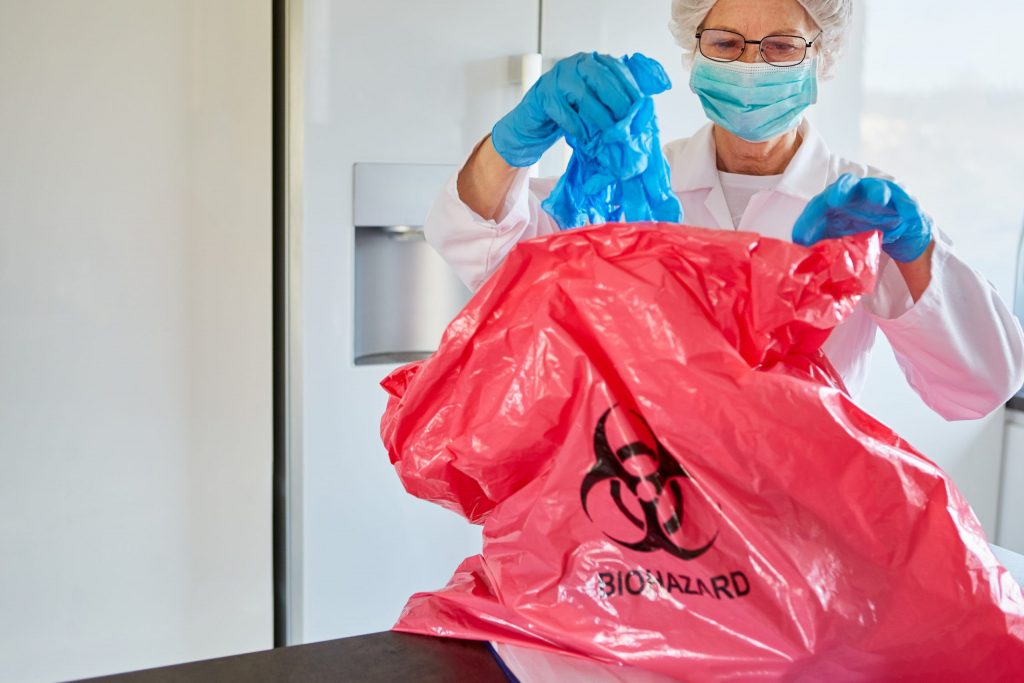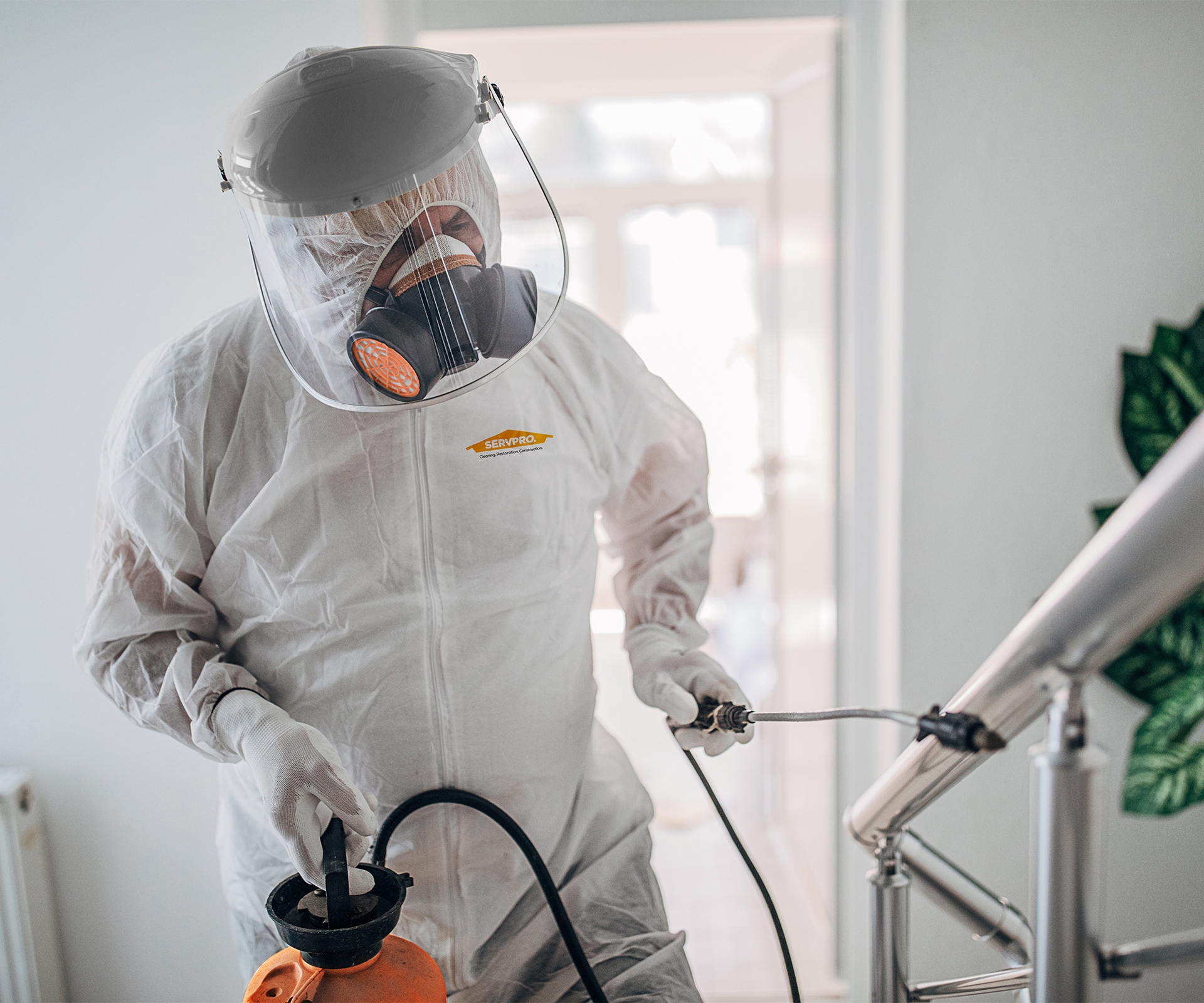Sewage Cleanup Solutions: Quick and Safe Remediation of Contaminated Areas
Expert Biohazard Cleaning and Decontamination for Blood, Bodily Fluids, and Hazardous Products
The potential health and wellness threats associated with exposure to biohazards emphasize the crucial demand for meticulous handling and extensive cleaning. As we navigate the elaborate landscape of biohazard cleaning, recognizing the nuances of policies, conformity, and the customized equipment at play ends up being critical in ensuring a risk-free and complete decontamination process.
Health And Wellness Threats of Biohazard Direct Exposure
Direct exposure to biohazards poses significant health and wellness dangers that can lead to extreme consequences for individuals and communities alike. Biohazards encompass a wide range of organic materials, consisting of blood, physical fluids, mold and mildew, microorganisms, infections, and various other possibly transmittable materials. When individuals enter into call with these biohazards, whether with accidents, inappropriate handling, or ecological direct exposure, they deal with the danger of contracting major health problems or conditions.
One of the primary wellness dangers related to biohazard direct exposure is the transmission of contagious illness. Bloodborne microorganisms such as HIV, liver disease B and C, and numerous microorganisms can be existing in biohazardous materials, positioning a direct hazard to human wellness. Breathing in airborne biohazards like mold spores or entering call with polluted surfaces can also bring about respiratory system problems, allergies, and various other negative health and wellness effects.
Furthermore, biohazard direct exposure can have long-lasting health effects, with some illness manifesting years after the first get in touch with (Blood Cleanup). For that reason, it is essential to focus on appropriate biohazard cleaning and purification to reduce these wellness dangers and ensure the safety and security of individuals and areas

Specialized Training for Biohazard Clean-up
When it involves dealing with biohazard clean-up successfully and safely, specialized training plays an essential function in making certain proper decontamination treatments are adhered to. Biohazard cleanup requires certain expertise and abilities to effectively reduce dangers related to bloodborne virus, physical fluids, and dangerous materials. Specialists learnt biohazard cleanup undergo extensive direction on exactly how to securely take care of, get rid of, and deal with biohazardous materials to avoid contamination and exposure.
Specialized training for biohazard clean-up covers a series of necessary subjects, consisting of appropriate individual safety devices (PPE) usage, bloodborne pathogen awareness, decontamination techniques, and hazardous waste disposal protocols. Individuals learnt biohazard cleaning are outfitted with the essential expertise to analyze contamination degrees, recognize prospective risks, and execute suitable cleanup treatments in conformity with regulative standards.
Continual training and education and learning are vital in the field of biohazard cleanup to remain upgraded on the current decontamination technologies, safety and security procedures, and policies. By investing in specialized training, biohazard cleaning experts can efficiently react to emergency situation cleanup scenarios and secure both public health and wellness and the environment.
Value of Appropriate Purification Techniques
Utilizing appropriate decontamination methods is important in biohazard cleaning to successfully remove harmful materials and lessen health threats. Reliable purification not just makes sure the removal of noticeable traces of blood, bodily fluids, and other biohazards but additionally targets invisible virus that may present serious wellness threats otherwise properly eliminated. By adhering to strict purification protocols, trained specialists can significantly minimize the threat of exposure to hazardous microbes, viruses, and germs that might lead to conditions or infections.
Correct decontamination methods include the usage of specialized equipment and anti-bacterials that are especially designed to neutralize biohazards efficiently. Detailed cleaning and disinfection of contaminated areas are vital to protect against the spread of pathogens and guarantee a risk-free atmosphere for passengers. In addition, the proper disposal of biohazardous waste adhering to purification treatments is vital in preventing contamination of other surfaces or individuals.

Devices and Tools for Safe Cleanup
When dealing with blood, bodily liquids, or crime scene cleanup sf hazardous materials, biohazard cleansing professionals depend on specialized equipment to minimize direct exposure threats and thoroughly sanitize the damaged area. Furthermore, biohazard cleansing kits consisting of anti-bacterials, absorbent materials, and biohazard bags are made use of to securely get rid of and contain of contaminated products.
Advanced cleansing devices like hospital-grade disinfectants, HEPA-filtered vacuums, and misting equipments are employed to sanitize surfaces and eliminate biohazards properly. Specialized equipment such as sharps containers and biohazard waste disposal bins are used to securely take care of sharp things and biohazardous waste materials. By utilizing the best devices and devices, biohazard cleansing specialists can ensure a comprehensive clean-up procedure that prioritizes safety and security and reduces wellness risks for both employees and passengers of the damaged room.
Rules and Conformity in Biohazard Cleansing
Correct adherence to laws and conformity criteria is paramount in biohazard cleaning to ensure the safety of both personnel and the setting. Federal government firms such as OSHA (Occupational Safety And Security and Wellness Management) and the EPA (Environmental Security Company) have established specific standards for biohazard cleaning treatments to lessen health and wellness risks and environmental contamination. These policies cover a variety of elements including the handling, transportation, and disposal of biohazardous materials, along with the needed training and protective equipment required for employees associated with the cleaning process.
Biohazard cleaning companies have to remain up-to-date with these laws to ensure that their operations fulfill the needed safety and security standards. Failing to follow these policies can result in extreme repercussions, including penalties, lawsuit, and threatening the health of people and the atmosphere. By following rigid policies and conformity procedures, biohazard cleaning business can efficiently minimize dangers and ensure a detailed and risk-free cleanup procedure for all parties included.
Verdict
In final thought, biohazard cleansing and decontamination call for specialized training, appropriate techniques, and adherence to policies. Direct exposure site here to blood, bodily fluids, and unsafe materials presents significant health and wellness threats, making it essential to utilize the appropriate equipment and devices for secure cleanup. By complying with rigorous methods and guidelines, experts can properly mitigate the risks connected with biohazard direct exposure and ensure the safety of both themselves and others.
As we navigate the complex landscape of biohazard cleaning, understanding the nuances of policies, conformity, and the customized tools at play comes to be vital in making certain a secure and comprehensive purification process. (Blood Cleanup)
When it comes to dealing with biohazard clean-up effectively and safely, specialized training plays an essential function in making sure correct purification treatments are complied with.Using appropriate decontamination methods is important in biohazard clean-up to successfully reduce and eliminate hazardous materials wellness threats. In addition, biohazard cleaning kits including disinfectants, absorbing products, and biohazard bags are utilized to safely dispose and include of contaminated things.
Federal government companies such as OSHA (Occupational Safety look at this website and Wellness Management) and the EPA (Environmental Security Agency) have actually established particular standards for biohazard clean-up procedures to minimize wellness dangers and environmental contamination.